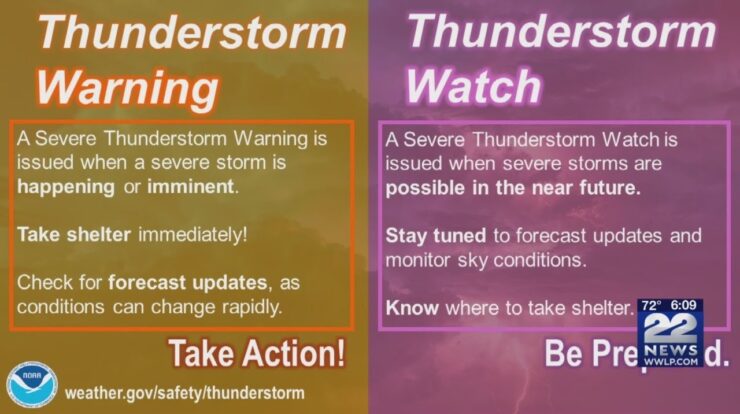
Is a watch or warning worse – When it comes to meteorological alerts, understanding the distinction between a watch and a warning is crucial. As we delve into the intricacies of these two terms, we’ll explore their nature, severity, and impact on decision-making, empowering you to navigate weather-related situations with greater clarity and preparedness.
A watch signifies the possibility of an impending hazardous event, while a warning indicates that the event is imminent or already occurring. Comprehending these nuances can guide our actions and ensure our safety.
Watches and Warnings: A Comprehensive Overview

Watches and warnings are critical tools used to alert individuals and communities about potential hazards and threats. Understanding the nature, severity, and impact of these alerts is essential for effective decision-making and safety.
Nature and Definitions
A watch is issued when conditions are favorable for a specific hazard to occur, while a warning is issued when the hazard is imminent or already occurring. For example, a tornado watch indicates that conditions are ripe for tornadoes to form, while a tornado warning means that a tornado has been spotted or is indicated by radar.
Severity and Consequences
Watches and warnings vary in severity, with warnings being more serious than watches. Ignoring a warning can have significant consequences, including property damage, injuries, or even loss of life. Ignoring a watch, while not as dangerous, can still lead to inconvenience or disruption.
Issuance and Communication
Watches and warnings are issued by authorized meteorological or emergency management agencies. They are communicated through various channels, including television, radio, social media, and mobile alerts. It is important to have multiple ways to receive these alerts to ensure timely notification.
When it comes to weather alerts, understanding the difference between a watch and a warning is crucial. A watch means conditions are favorable for a hazard to develop, while a warning indicates the hazard is imminent or already occurring. If you’re looking for the latest on the upcoming Christopher Nolan film, “Oppenheimer,” check out our guide on how to watch Oppenheimer . However, if you’re more interested in the severity of weather alerts, explore our article on whether a watch or a warning is worse . For a comprehensive comparison of these two terms, visit our dedicated page on the difference between a watch and a warning .
Impact on Decision-Making, Is a watch or warning worse
Watches and warnings play a crucial role in decision-making. They provide valuable information that individuals and organizations can use to prepare for and respond to potential hazards. For example, a tornado warning may prompt people to seek shelter, while a flood watch may lead to the evacuation of low-lying areas.
Comparison and Contrast
| Characteristic | Watch | Warning |
|---|---|---|
| Severity | Less severe | More severe |
| Timing | Issued when conditions are favorable | Issued when hazard is imminent or occurring |
| Consequences | Inconvenience or disruption | Property damage, injuries, or loss of life |
| Communication | Multiple channels | Multiple channels |
| Impact | Preparation and response | Immediate action and response |
Final Summary: Is A Watch Or Warning Worse

In the realm of weather preparedness, the difference between a watch and a warning can be a matter of crucial importance. Understanding the severity, consequences, and communication channels associated with each alert empowers us to make informed decisions and safeguard ourselves from potential hazards.
Q&A
What’s the primary difference between a watch and a warning?
A watch indicates the potential for a hazardous event, while a warning signifies that the event is imminent or already occurring.
Why is it important to heed weather alerts?
Ignoring a watch or warning can have severe consequences, including property damage, injuries, or even loss of life.
Stay alert! A “watch” means conditions are favorable for severe weather, so keep an eye on the forecast here . If it escalates to a “warning,” it’s time to take immediate action. Want to witness the gripping tale of the atomic bomb’s creator? Discover how to watch Oppenheimer and unravel the secrets of this enigmatic figure.
How are watches and warnings communicated?
Watches and warnings are typically disseminated through various channels, including weather forecasts, radio and television broadcasts, and mobile phone alerts.






